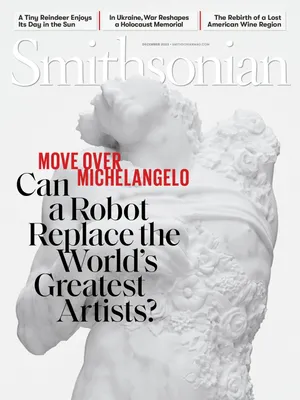OFFICE OF THE SECRETARY OF THE SMITHSONIAN
What Comes Next for the Smithsonian’s New Human Remains Task Force
As the Smithsonian grapples with a dark legacy, a new task force will recommend ethical policies for handling human remains
:focal(1000x619:1001x620)/https://tf-cmsv2-smithsonianmag-media.s3.amazonaws.com/filer_public/73/05/7305090b-e49d-4187-bd53-14a67fa1e1e5/nhb2015-02891.jpg)
For more than a century, anthropologists at the Smithsonian’s National Museum of Natural History have obtained, studied and stored thousands of human remains. While the practice can reveal critical details about past civilizations, it now comes with a host of ethical considerations, which have significantly changed the scientific process. Most of the remains still in our possession were acquired decades ago without the proper consent of the individuals, their close relatives or their tribal communities. The Smithsonian is currently taking steps to rectify these wrongs and prevent any future recurrence.
This month, the Smithsonian’s new Human Remains Task Force will deliver its recommendations on how we should best proceed with the repatriation of some 30,700 human remains in our collections.
Most of those remains were obtained between 1903 and 1941 when Aleš Hrdlička served as head of the physical anthropology division at what is now the National Museum of Natural History. With the goal of scientifically proving the since-debunked myth of white superiority, Hrdlička was a leading figure in a scientific community that espoused notions of white supremacy, and he took particular interest in the remains of Indigenous people and people of color. Hrdlička and others in his field looted graves and obtained remains without individual consent from morgues and hospitals in more than 80 countries, sometimes with the help of physicians whose patients had died.
Today, left to reckon with the aftermath of that dehumanizing practice, we are working toward repatriating remains from Hrdlička’s tenure. It’s a collection that should have never been amassed, and we’re committed to dismantling as much of it as possible in a way that recognizes and honors the people affected.
Since the passage of the National Museum of the American Indian Act in 1989, the Smithsonian has repatriated the remains of more than 5,000 people, and we are working to accelerate that pace. There is no legislation that addresses the unethically obtained remains of non-Native people, but the Smithsonian’s forthcoming policy will steward the return of all remains regardless of cultural affiliation.
This challenging task involves using the limited records we have to identify who these people were and who their surviving relatives might be. When it’s not possible to identify a direct descendant, we will work with descendant communities. That said, we are committed to standardizing the ethical return and repatriation process as much as possible, while maintaining the flexibility to accommodate the wishes of descendant communities. The recommendations will also outline what types of research on human remains we will allow going forward.
This forthcoming policy will be heavily informed by the task force’s recommendations, and I trust it will be historic, for the Smithsonian and the museum field worldwide. I am determined to position the Smithsonian as a leader, not just in scholarship, but also in the ethical considerations that inform that scholarship.
